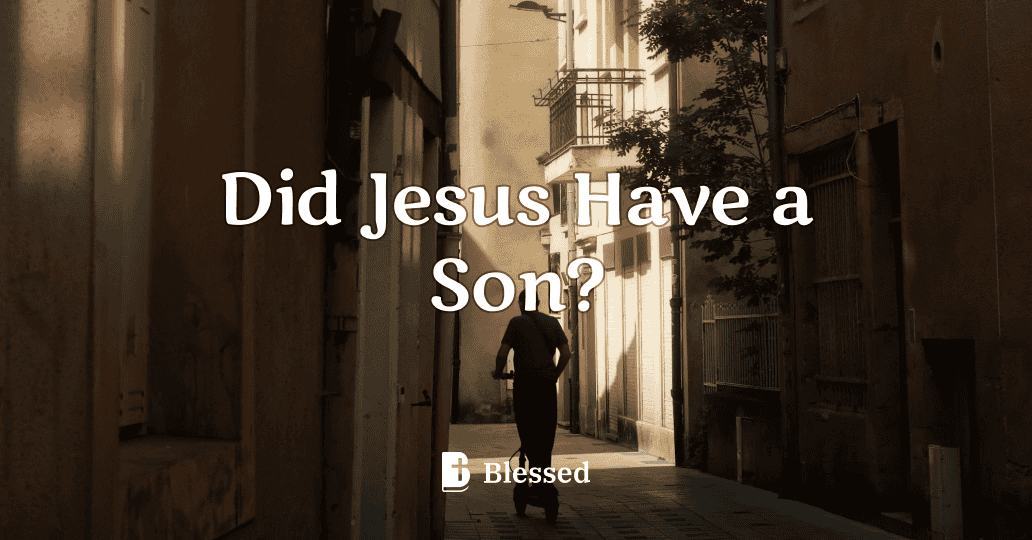Latest
Explore the latest Bible answers and insights. Stay informed on fresh perspectives and guidance for your spiritual growth.

Where Can I Donate Used Christian Books in Gilbert, AZ?
Where Can I Donate Used Christian Books in Gilbert, AZ?Donating used Christian books is a meaningful way to share the gospel and support others in their faith journey. In Gilbert, AZ, several organizations and ministries accept Christian book donations to distribute to those in need or to support local and global outreach efforts.Places to Donate Christian Books1. Local Churches: Many churches in Gilbert accept donations of Bibles, devotionals, and other Christian literature for their libraries, small groups, or outreach ministries. Contact your local church to see if they have a need for donated books.2. Christian Thrift Stores: Stores like Goodwill or locally-owned Christian thrift shops may accept Christian books to sell or distribute to the community. The proceeds often support charitable causes.3. Faith-Based Nonprofits: Organizations like Love Packages or Christian Library International often partner with local drop-off points to collect Christian literature and distribute it to prisons, overseas missions, or underprivileged communities. Check their websites for donation guidelines and potential locations near Gilbert.How to Prepare Your Donation1. Ensure the books are in good condition, with minimal wear and no missing pages.2. Sort and label them by category (e.g., devotionals, theology, children’s books) to help recipients organize the materials.Why This MattersDonating Christian books supports discipleship, evangelism, and spiritual growth, extending the reach of God’s Word to others who may not have access to these resources.

What Does "Yoke" Mean in the Bible?
What Does "Yoke" Mean in the Bible?The term "yoke" in the Bible has both a literal and figurative meaning. Literally, a yoke is a wooden crosspiece that is fastened over the necks of two animals (usually oxen) to enable them to pull a plow or cart together. It symbolizes partnership, submission, and burden-bearing. Figuratively, the term is used to represent the idea of servitude, oppression, or the submission to authority.The Literal Meaning of YokeIn the Old Testament, a yoke is often mentioned in connection with agricultural life. In the book of Deuteronomy, for instance, the yoke represents the burden of labor that the Israelites were to endure in their obedience to God's commands. The yoke also became a symbol of the oppression Israel experienced under foreign nations. In Jeremiah 28:13-14, the prophet Jeremiah refers to the yoke as a symbol of God's judgment upon Israel for their disobedience.The Figurative Meaning of YokeIn a figurative sense, the yoke is frequently used to describe the spiritual burdens that individuals carry. Jesus refers to the yoke in the New Testament in a way that contrasts the heavy burdens imposed by religious legalism with the light and easy yoke of His grace. In Matthew 11:28-30, Jesus invites those who are weary and burdened to come to Him and take His yoke upon them, for His yoke is easy and His burden is light. This passage emphasizes the contrast between the oppressive burdens of the law and the freedom found in Christ's love and grace.The Yoke as a Symbol of ServitudeAnother important use of the yoke in the Bible is as a symbol of servitude and submission to authority. In 1 Timothy 6:1, slaves are instructed to be respectful to their masters, likening their relationship to that of a yoke, which requires submission to an authority figure. This metaphor is also used to describe the relationship between believers and Christ, where Christians are called to willingly submit to God's will and follow His commands.ConclusionThe concept of the "yoke" in the Bible carries both literal and symbolic meanings. It represents the burden of servitude, oppression, and submission, but it is also used to describe the ease and freedom that come with following Christ. The yoke of Christ offers believers a life of grace, freedom, and rest, in contrast to the heavy yokes of sin and legalism.
Blessed App
Did Jesus Have Biological Siblings?
Did Jesus Have Biological Siblings?Yes, the Bible indicates that Jesus had biological siblings. These siblings were the children of Mary and Joseph born after Jesus, as Jesus was Mary’s firstborn son (Luke 2:7). While some traditions interpret these references differently, the plain reading of Scripture supports the existence of Jesus’ biological brothers and sisters.Biblical Evidence of Jesus’ SiblingsNamed Brothers: Matthew 13:55-56 mentions Jesus’ brothers: "Is not this the carpenter’s son? Is not his mother called Mary? And his brethren, James, and Joses, and Simon, and Judas?"Reference to Sisters: The same passage also mentions His sisters: "And his sisters, are they not all with us?" although they are not named.James and Jude: James, one of Jesus’ brothers, became a prominent leader in the early church and authored the Epistle of James. Jude, another brother, is traditionally attributed as the author of the Epistle of Jude.Alternative InterpretationsSome Christian traditions, particularly in Catholic and Orthodox circles, interpret these siblings as cousins or Joseph’s children from a previous marriage. However, these interpretations are not explicitly supported by the biblical text.ConclusionThe Bible provides strong evidence that Jesus had biological siblings born to Mary and Joseph. These family connections further emphasize His humanity and the ordinary aspects of His earthly life.
Blessed App
Did Jesus Have a Son?
Did Jesus Have a Son?No, the Bible does not record Jesus having a biological son or any children. Jesus’ mission was focused on His divine purpose of bringing salvation to humanity rather than establishing a biological lineage. Claims suggesting otherwise are not supported by Scripture and often arise from speculative or fictional sources.Biblical EvidenceJesus’ Singleness: The Gospels consistently present Jesus as unmarried and without children, emphasizing His dedication to His ministry (Luke 9:58).Spiritual Fatherhood: Jesus referred to His followers as His spiritual family. In Matthew 12:49-50, He said: "Behold my mother and my brethren! For whosoever shall do the will of my Father which is in heaven, the same is my brother, and sister, and mother."Focus on Divine Mission: Jesus lived a life wholly devoted to His mission of redemption, leaving no indication of a biological family.Addressing Speculative ClaimsSome speculative works, such as fictional books and movies, have suggested that Jesus had children, but these are not based on biblical or historical evidence.ConclusionJesus did not have a biological son. His mission centered on spiritual salvation, and His legacy is carried through His followers, who continue His work and message.
Blessed App
Should I Say Yeshua or Jesus?
Should I Say Yeshua or Jesus? The names "Yeshua" and "Jesus" both refer to the same person: the Son of God, the Savior of the world. "Yeshua" is the Hebrew name for Jesus, while "Jesus" is the Greek transliteration of that name. The question of which name to use often arises among those who want to understand the cultural and historical context of Jesus' life and ministry. Both names are biblically valid, and the choice depends on the individual's emphasis—whether they want to emphasize Jesus' Jewish heritage or the name used in the New Testament Scriptures.The Significance of the Name YeshuaThe name "Yeshua" is the Hebrew name that Jesus would have been called during His time on Earth. It means "salvation" or "the Lord is salvation." In Matthew 1:21, the angel tells Joseph, “She will bear a son, and you shall call his name Jesus, for he will save his people from their sins.” The name Yeshua aligns with this promise of salvation, as it reflects the very mission of Jesus' life. Using the name Yeshua can help Christians connect with the Jewish roots of their faith and understand the significance of Jesus' earthly identity.The Greek Name JesusThe name "Jesus" comes from the Greek form of Yeshua, which is "Iesous." The New Testament was written in Greek, and the name "Iesous" is used throughout the Gospels and epistles. While "Yeshua" may carry more of the original cultural and linguistic weight, "Jesus" is the name recognized worldwide in the Christian faith, as it is used in nearly all translations of the Bible. Jesus is the name that has been proclaimed in the Great Commission (Matthew 28:18-20) and is used to spread the gospel around the world.ConclusionUltimately, both names refer to the same person—Jesus, the Savior. The choice between "Yeshua" and "Jesus" may depend on cultural, historical, or theological preferences. Both names carry deep significance, but for Christians, the important thing is recognizing that Jesus (or Yeshua) is the Messiah who came to save humanity from sin. Whichever name is used, the focus should always be on the person and work of Jesus Christ, our Savior and Lord.
Blessed App
Why Do People Say Jesus H. Christ?
Why Do People Say Jesus H. Christ? The phrase "Jesus H. Christ" is a commonly used expression, often in moments of surprise, frustration, or exasperation. While it may seem casual or irreverent to some, it has deep historical and linguistic origins. It is important to explore why this expression exists and its implications in the context of faith. The Origins of the "H" in Jesus H. Christ The "H" in the phrase is not a reference to a middle name for Jesus but rather stems from the historical use of monograms. In early Christian tradition, the letters "IHS" were used to represent the name of Jesus. These letters are derived from the Greek word "Ἰησοῦς" (Iesous), which is the name of Jesus in the New Testament. The "H" was a result of a misinterpretation or transcription error in the Latin alphabet. The monogram "IHS" became a common symbol for Christ, and over time, people mistakenly expanded this into the expression "Jesus H. Christ." This was not originally a doctrinal statement but rather an expression of speech. The Use of "Jesus H. Christ" as an Exclamation In modern culture, the phrase is often used as an exclamation in moments of shock or frustration. While the intention behind the phrase may not always be religious, it still uses the name of Jesus, which can be troubling for some who see it as disrespectful or irreverent. The Bible teaches that the name of Jesus is to be revered, as seen in Philippians 2:10-11: "That at the name of Jesus every knee should bow, of things in heaven, and things in earth, and things under the earth; And that every tongue should confess that Jesus Christ is Lord, to the glory of God the Father." The Importance of Reverence for Jesus' Name As Christians, the name of Jesus should be spoken with reverence and awe. The use of Jesus' name in casual or irreverent ways goes against the commandment to honor God's name. In Matthew 6:9, Jesus taught His disciples to pray, saying, "Our Father which art in heaven, Hallowed be Thy name." Christians are reminded to treat Jesus' name with utmost respect and to avoid using it in vain. The expression "Jesus H. Christ" is a reminder of how language can impact our reverence for sacred things. Conclusion The phrase "Jesus H. Christ" originated from historical monograms but is often used casually today as an exclamation. While the phrase may seem harmless to some, it is important for believers to remember the significance of Jesus’ name and to use it with reverence, as it reflects His divine nature and the respect due to Him as Lord and Savior.
Blessed App
Is There Evidence Jesus Studied with the Essenes?
Is There Evidence Jesus Studied with the Essenes? The Essenes were a Jewish sect that lived during the time of Jesus, often associated with asceticism and strict adherence to the laws of the Torah. Some scholars have speculated that Jesus may have had contact with or even studied under the Essenes, given their shared values and proximity during his time. However, the question remains: is there concrete evidence that Jesus studied with the Essenes?The Historical Context of the EssenesThe Essenes were one of several Jewish groups during the Second Temple period, alongside the Pharisees and Sadducees. They are best known for their community life, their strict interpretation of Jewish laws, and their focus on purity. The Dead Sea Scrolls, discovered in the mid-20th century, are attributed to the Essenes and reveal much about their beliefs, practices, and lifestyle. The sect was characterized by an emphasis on waiting for the coming of the Messiah and living in accordance with God's laws.Jesus and the Essenes: Shared ThemesAlthough there is no direct biblical evidence that Jesus studied with the Essenes, there are similarities between their teachings and his. For example, both Jesus and the Essenes placed significant importance on purity, repentance, and the coming of the Kingdom of God. Additionally, the practice of baptism, which was common among the Essenes as a rite of purification, is also central to Jesus’ ministry, with the baptism of Jesus being recorded in the Gospels (Matthew 3:13-17). Furthermore, the Essenes' focus on community life and separation from the secular world can be seen as a backdrop for some of Jesus’ teachings about living righteously in an unrighteous world.Lack of Direct EvidenceWhile these thematic similarities suggest some overlap, there is no definitive historical evidence that Jesus was directly associated with the Essenes or studied under them. The New Testament does not mention the Essenes, nor is there any clear indication in the Gospels that Jesus was involved with their specific group. Jesus was known to engage with a variety of Jewish traditions and often challenged the religious practices of the time, such as those of the Pharisees and Sadducees. This further complicates the possibility of a close association with any single sect.ConclusionWhile the shared themes between Jesus’ teachings and those of the Essenes are notable, there is no concrete evidence that Jesus studied with or was formally associated with the Essenes. The relationship between Jesus and the Essenes remains speculative and largely dependent on historical interpretation rather than direct documentation.
Blessed App
Did Jesus Cry When Someone Died?
Did Jesus Cry When Someone Died?Yes, the Bible records that Jesus wept when His friend Lazarus died. This moment demonstrates Jesus’ humanity, His compassion for those who grieve, and His divine empathy for human suffering.Biblical Account of Jesus WeepingThe Death of Lazarus: In John 11:35, the shortest verse in the Bible states: "Jesus wept." This occurred after Jesus saw Mary, Martha, and others mourning Lazarus’ death.Jesus’ Compassion: Jesus was deeply moved by the sorrow of those around Him. John 11:33 describes His reaction: "When Jesus therefore saw her weeping, and the Jews also weeping which came with her, he groaned in the spirit, and was troubled."The Significance of Jesus WeepingJesus’ tears reveal His genuine care for humanity. Although He knew He would raise Lazarus from the dead, He shared in the grief of those mourning, reflecting His deep empathy.ConclusionYes, Jesus cried when someone died. His tears show His humanity and His profound compassion for the pain and loss experienced by those He came to save. This moment highlights the comforting truth that He understands and cares about human suffering.
Blessed App
Was There an Eclipse When Jesus Died?
The Eclipse During Jesus’ CrucifixionThe Gospels describe a period of darkness during Jesus’ crucifixion, which has led some to wonder if an actual solar eclipse occurred at that time. The Gospel of Matthew 27:45 states, “Now from the sixth hour there was darkness over all the land unto the ninth hour” (KJV). This darkness lasted for three hours, from noon to 3 p.m., the time of Jesus’ death.Natural Explanation: Was It an Eclipse?Some scholars have suggested that this darkness could have been a solar eclipse, but there are several reasons why this is unlikely. A solar eclipse occurs when the moon passes between the Earth and the Sun, casting a shadow on the Earth. However, solar eclipses last only a few minutes and cannot last for three hours. Additionally, the Passover occurred during a full moon, making a solar eclipse impossible since a solar eclipse can only happen during a new moon.Theological Significance of the DarknessMany theologians view this darkness as a supernatural sign, a symbolic manifestation of the gravity of Jesus’ sacrifice. The darkness could represent God's judgment upon sin and the separation of Jesus from the Father as He bore the sins of the world. This is supported by Jesus’ cry from the cross in Matthew 27:46: “My God, my God, why hast thou forsaken me?” (KJV). The darkness at this moment reflects the spiritual darkness surrounding Jesus as He bore the weight of humanity’s sin.Historical Accounts of DarknessPhlegon of Tralles: An ancient historian mentions an extraordinary darkness and earthquake during the time of Jesus’ crucifixion, which some interpret as a reference to the Gospel accounts.Theological Reflection: The darkness is seen as a symbol of God's judgment, foreshadowing the moment Jesus would bear the sins of the world.While there may not have been a natural eclipse, the event holds profound theological meaning, pointing to the depth of Christ’s sacrifice.
Blessed App
Did Jesus Say He Was God?
Did Jesus Say He Was God?While Jesus did not explicitly state the words "I am God," His teachings, actions, and statements in the Bible clearly reveal His claim to divinity. His audience understood these claims, as evidenced by their reactions to His words.Biblical Evidence of Jesus’ DivinityJesus’ "I Am" Statement: In John 8:58, Jesus declared: "Before Abraham was, I am." This alludes to God’s self-identification in Exodus 3:14 ("I AM THAT I AM"), and His audience attempted to stone Him for blasphemy.Equality with the Father: In John 10:30, Jesus said: "I and my Father are one." The Jews again sought to stone Him, recognizing this as a claim to be God (John 10:31-33).Forgiving Sins: Jesus forgave sins, an authority attributed only to God. In Mark 2:5-7, the scribes questioned: "Who can forgive sins but God only?"Jesus’ Actions Supporting His DivinityIn addition to His statements, Jesus’ miracles, acceptance of worship (Matthew 14:33), and fulfillment of prophecies affirmed His divine nature. His resurrection further confirmed His identity as God’s Son (Romans 1:4).ConclusionWhile Jesus did not use the exact phrase "I am God," His teachings, miracles, and the reactions of His audience affirm His claim to divinity. His life and works consistently pointed to His identity as God incarnate.
Blessed App
Did Jesus Claim to Be God?
Did Jesus Claim to Be God?The Bible records several instances where Jesus made claims about His divine nature, leading to the understanding that He declared Himself to be God. While He did not explicitly say the words "I am God," His statements and actions conveyed His identity as the Son of God, equal with the Father.Biblical Evidence of Jesus’ ClaimsJesus’ "I Am" Statements: In John 8:58, Jesus declared: "Before Abraham was, I am." This statement alludes to God’s self-identification in Exodus 3:14 and was understood by His audience as a claim to divinity, as evidenced by their attempt to stone Him.Equality with God: In John 10:30, Jesus said: "I and my Father are one." The Jews’ reaction of attempting to stone Him (John 10:31-33) shows they perceived this as a claim to being God.Authority to Forgive Sins: In Mark 2:5-7, Jesus forgave sins, prompting the scribes to question: "Who can forgive sins but God only?"Jesus’ Actions Supporting His ClaimsIn addition to His words, Jesus performed miracles, accepted worship (Matthew 14:33), and fulfilled prophecies that affirmed His divine nature (Isaiah 9:6).ConclusionWhile Jesus did not explicitly state "I am God," His claims, actions, and the responses of His audience make it clear that He identified Himself as divine. His life and teachings invite faith in His identity as the Son of God and Savior of the world.
Blessed App
Did Any of Jesus’ Disciples Go Blind?
Did Any of Jesus’ Disciples Go Blind?None of Jesus’ original twelve disciples are recorded in Scripture as going blind. However, there are biblical references to blindness as a physical condition and as a spiritual metaphor. Additionally, the Apostle Paul, who became a disciple after Jesus’ resurrection, temporarily lost his sight during his conversion experience.Biblical References to BlindnessPaul’s Temporary Blindness: In Acts 9:8-9, Paul (then Saul) was blinded by a vision of Jesus on the road to Damascus. His sight was restored three days later by Ananias (Acts 9:17-18).Blindness as a Spiritual Metaphor: Jesus frequently used blindness to illustrate spiritual truths. For example, in John 9:39, He said: "For judgment I am come into this world, that they which see not might see; and that they which see might be made blind."Healing of Blindness by JesusDuring His ministry, Jesus performed several miracles of healing the blind, demonstrating His divine power and compassion (e.g., Mark 10:46-52, John 9:1-7).ConclusionWhile none of Jesus’ original disciples went blind, Paul’s temporary loss of sight illustrates the transformative power of encountering Christ. Blindness in the Bible often carries spiritual significance, pointing to God’s ability to heal and restore both physically and spiritually.
Blessed App
Did Jesus Eat Pork?
Did Jesus Eat Pork?The Bible does not provide any direct evidence that Jesus ate pork. As a devout Jew, Jesus likely followed the dietary laws outlined in the Old Testament, which prohibited the consumption of pork (Leviticus 11:7-8). These laws were an integral part of Jewish identity and religious practice during His time.Biblical ContextThe Mosaic Law: Leviticus 11:7-8 states: "And the swine, though he divide the hoof, and be clovenfooted, yet he cheweth not the cud; he is unclean to you. Of their flesh shall ye not eat."Jesus’ Adherence to the Law: In Matthew 5:17, Jesus declared: "Think not that I am come to destroy the law, or the prophets: I am not come to destroy, but to fulfil." This indicates that He respected and followed the Mosaic Law during His earthly ministry.Dietary Laws and the New CovenantWhile Jesus likely did not eat pork, the New Testament later redefined dietary practices for Christians. In Acts 10:15, Peter is told: "What God hath cleansed, that call not thou common," signifying a shift away from Old Testament dietary restrictions.ConclusionJesus, as a Jew living under the Mosaic Law, likely did not eat pork. However, the New Testament introduces a broader understanding of dietary freedom in the context of the new covenant.
Blessed App
Does God Protect Everyone?
Does God Protect Everyone?The Bible teaches that God offers protection to all who trust in Him, though this protection may not always align with human expectations. God’s protection is often spiritual, ensuring the ultimate good for those who believe in Him, even amid trials or suffering.Examples of God’s ProtectionFor Believers: Psalm 91:1-2 assures, "He that dwelleth in the secret place of the most High shall abide under the shadow of the Almighty," highlighting God’s care for those who trust in Him.For Humanity: Matthew 5:45 reveals God’s general provision and care for all: "He maketh his sun to rise on the evil and on the good."Spiritual Over Physical Protection: Romans 8:28 emphasizes that God works all things for the good of those who love Him, which may include allowing hardships to achieve greater spiritual purposes.ConclusionGod offers protection to everyone, particularly those who trust in Him. While His protection may not prevent all physical harm, it ensures spiritual safety and the fulfillment of His ultimate purposes.
Blessed App
How Old Was Jesus When Joseph Died?
How Old Was Jesus When Joseph Died?The Bible does not provide a specific age for Jesus when Joseph, His earthly father, died. However, based on the information available in the Gospels and historical context, many scholars believe that Joseph likely died when Jesus was still in His adolescence or early adulthood. It is generally assumed that Joseph was older than Mary and that he died before Jesus began His public ministry at around age 30.Why the Age of Jesus at Joseph’s Death is UnclearWhile the Bible does not give explicit details about the death of Joseph, there are several clues that help us make educated assumptions. First, Joseph is mentioned in the early chapters of the Gospels—particularly in Matthew and Luke—where he is portrayed as a key figure in protecting and caring for Jesus and Mary. However, after the account of Jesus’ visit to the temple at age 12 (Luke 2:41-50), Joseph is not mentioned again in the Gospel narratives. This absence suggests that Joseph may have passed away sometime between Jesus' childhood and the start of His public ministry.The Absence of Joseph in Jesus’ MinistryThe absence of Joseph in the Gospels during the years of Jesus’ ministry may indicate his death. Jesus’ ministry began when He was about 30 years old, and there is no record of Joseph being alive during this time. In fact, during the crucifixion, when Jesus entrusted Mary to the care of the apostle John, He did so because Joseph was no longer present to care for her (John 19:26-27). This act suggests that Joseph had passed away, leaving Mary a widow.The Role of Joseph in Jesus’ Early LifeJoseph played a critical role in the early life of Jesus. He was a righteous man who obeyed God’s commands, taking Mary as his wife despite her pregnancy by the Holy Spirit. He also protected Jesus from King Herod’s massacre of infants by fleeing to Egypt with Mary and the young Jesus (Matthew 2:13-15). Joseph's devotion to God and his role in the early life of Jesus demonstrate his faithfulness and obedience to God's plan, even though his role in the later years of Jesus' life is not documented.ConclusionThe Bible does not specify the exact age of Jesus when Joseph died, but it is generally believed that Joseph passed away before Jesus began His public ministry. Scholars assume that Jesus was likely in His teens or early twenties at the time. Despite the lack of details, Joseph’s role in Jesus’ early life and his absence during Jesus’ ministry is a reminder of the important role he played in fulfilling God’s plan for the Savior (Matthew 1:18-25, John 19:26-27).
Blessed App